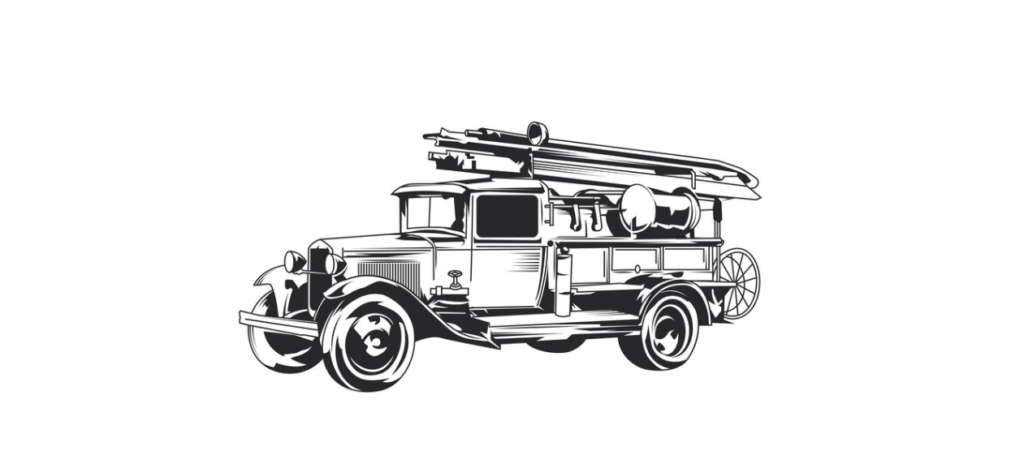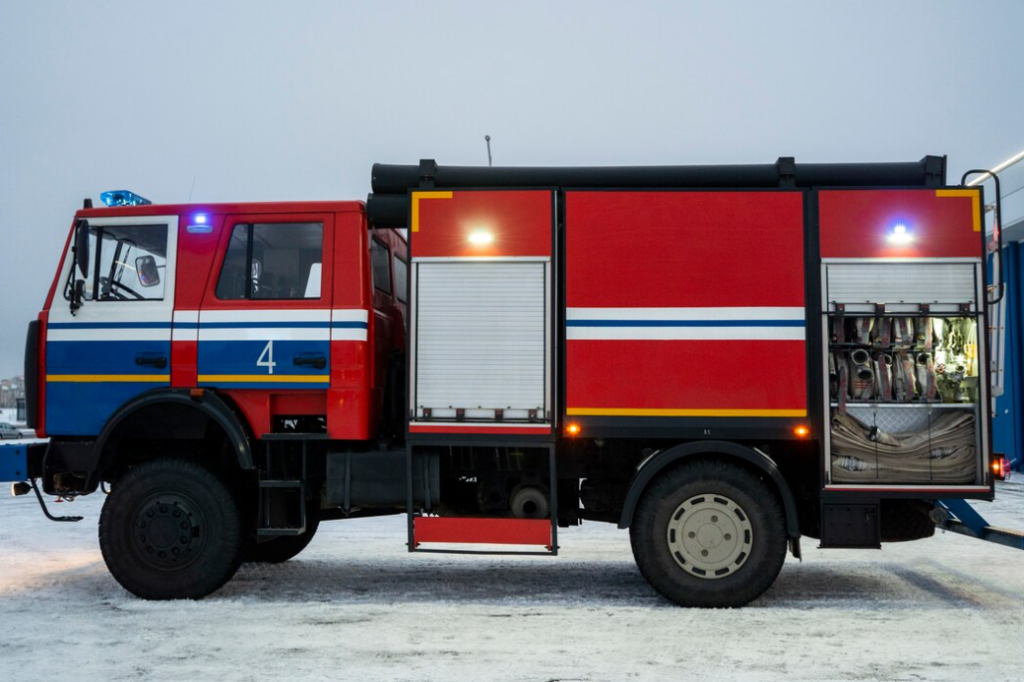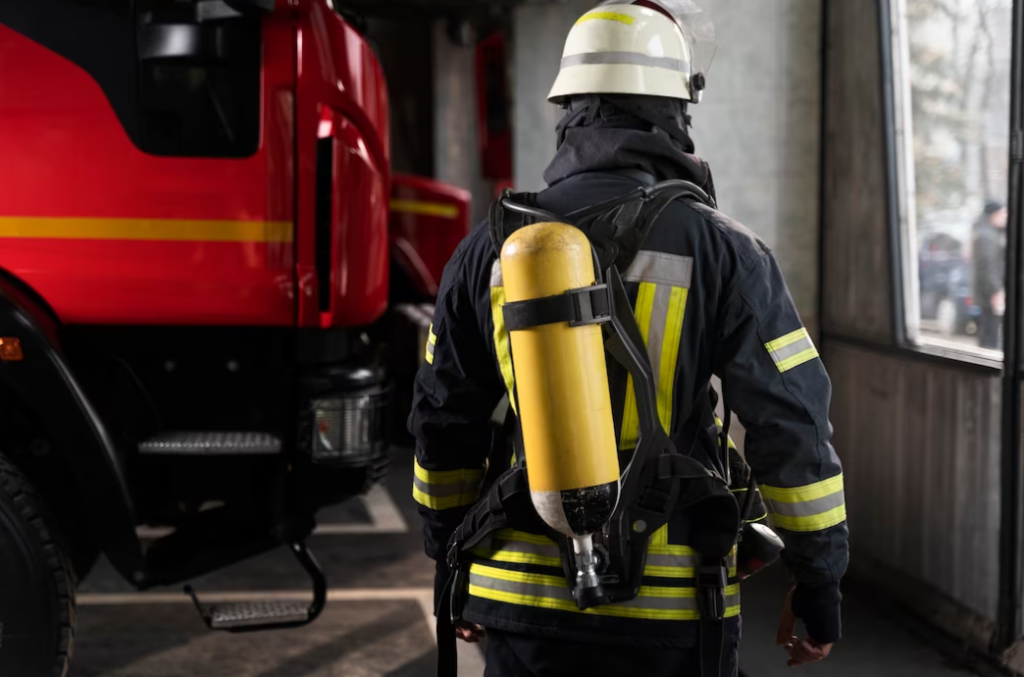Lights, sirens, and cascades of water, integral parts of the modern fire engine, tend to obscure the real role of this type of vehicle serving to save lives. For children and adults, the fire engine in action is a more exciting sight, surpassing its emergency service and police counterparts. Today, the common sight at the sight of a fire engine is that a fire has started somewhere. As you might expect, there were no motorized fire trucks until the truck itself was invented. Nevertheless, some of their features have been in use for some time.
Tracing the History of Fire Trucks

Fire trucks, those striking red vehicles equipped with powerful hoses, ladders, and sirens, are a familiar sight on the streets of towns and cities worldwide. These iconic vehicles have a rich and storied history, evolving from simple horse-drawn pumps to the advanced fire-fighting apparatus of today. It’s captivating to think about how far they’ve come, especially when considering the first fire truck ever made. In this article, we will take a journey through time and explore the fascinating history of fire trucks, from their humble beginnings to the advanced fire-fighting apparatus of today.
The history of fire trucks showcases the evolution of firefighting technology, reflecting continuous improvement and innovation. This progression mirrors the dynamic nature of link building strategies in digital marketing. Explore the evolution and its relevance to the adaptability of link building agencies.
Very early fire trucks were water pumps on wheels. They were designed to come to the aid of the firefighters of those days, the so-called “bucket brigades.” This was back in the 1700s when the British built pumps and used them to fight fires in Europe and also the United States.
The first power units meant that these pumps, whether they were manual or steam, consisted of people dragging the pump. When the men dragged the pump themselves they moved slowly and when they got to the scene, the firefighters were often too tired to do anything. Fortunately, in most cases, the fires went out before they even got there, so there was almost nothing left for them to do.
The Role and Evolution of Fire Trucks
Throughout history, fire trucks have undergone remarkable transformations, both in design and function. The image of a fire engine, with its bright lights, echoing sirens, and powerful gushes of water, has become an emblem of protection and safety in our communities. While their visual appeal captures the young and old’s attention, it’s essential to remember the fire truck’s critical role in life-saving missions. Indeed, the very sight of one racing through streets or positioned outside a building usually implies a fire emergency.
Though it might be challenging for many to imagine, there was a time when our towns and cities didn’t have the luxury of motorized fire engines. These modern machines only emerged following the broader introduction of motor vehicles. But the concept and some foundational features of the fire truck trace back much further. In their nascent stages, dating back to the 1700s, fire engines were rudimentary devices—essentially mobile water pumps. These were an innovation of the British and were designed to bolster the firefighting efforts of the era’s “bucket brigades”, both in Europe and across the pond in the United States.
The early adaptation of these firefighting tools presented numerous challenges. The primary mode of transportation for these water pumps was sheer human effort. Teams of men would physically pull the pump to the scene of a fire. This labor-intensive process meant that firefighters would often reach the incident site drained of energy, severely limiting their efficiency and effectiveness. Tragically, in many instances, fires would consume properties and then die down on their own before the firefighters even made their arrival, highlighting the pressing need for more advanced and efficient firefighting apparatuses.
1700s: The Dawn of Patented Fire Engine Blueprints
By the late 1800s, the establishment of paid firefighting services introduced the use of horses to transport fire pumps. This innovation improved response times, but the challenge of rapidly reaching fire sites persisted. People often found themselves running to fires, even with the pump already en route, wasting precious energy in the process. The concept of using human steps was introduced to address this issue.
As firefighting technology evolved, the increasing weight of fire trucks made horses less efficient for transportation. After covering short distances, the pace of these horse-driven fire trucks would drop significantly. This highlighted the need for a faster, more efficient mode of transportation.
In the early days of America, before the establishment of fire departments, homes with hearths were required by law to have a water bucket readily available. It was Benjamin Franklin, one of the nation’s founding fathers, who set up the first emergency fire response team in 1737.
The initial fire engines resembled large water reservoirs on carts pulled by horses. These tanks had hand-operated pumps that forced water through a flexible nozzle. A team of men would work in tandem, using their physical power to pump the levers on both sides of the tank, producing a forceful water stream.

1800s-1900s: Evolution of Fire Engines
In 1905, the innovative concept of a motor-powered fire engine was proposed by the well-known Popular Mechanics, a name that has since become iconic due to its long-standing magazine.
When was the First Fire Truck Made?
- The first fire truck was made in 1906 in Springfield, Massachusetts, by the Knox Automobile Company.
- This pioneering vehicle came equipped with ladders, lanterns, sirens, and more.
- Firefighters would clasp onto the truck’s sides, standing on the running boards as it navigated through city streets to reach a fire.
Mid-20th Century: Birth of the Ladder Truck
The 20th century was marked by dramatic shifts in population dynamics, with many people moving from rural settings to bustling urban centers. As cities grew vertically with the construction of skyscrapers and multi-story buildings, the challenges for firefighting evolved. Traditional methods proved ineffective against fires in these towering structures, emphasizing the need for advanced firefighting solutions.
- In this backdrop, Daniel D. Hayes, a visionary firefighter from the vibrant streets of New York City, identified a pressing need.
- He envisioned a truck that could cater to the challenges of urban fires.
- Drawing from his on-ground experience, Hayes ingeniously designed a truck-mounted extension ladder, a game-changer in urban firefighting.
- What made this ladder stand out was its unique spring-assist mechanism.
- With this, the ladder could be swiftly elevated, enabling firefighters to access even the topmost floors of tall buildings with ease.
Hayes’ innovative design transformed urban firefighting. Fire brigades could now roll up to a fire scene, quickly extend the ladder to the affected floors, efficiently combat the raging flames, and most importantly, rescue inhabitants trapped in these infernos. This equipment wasn’t just a technological marvel; it represented hope for countless city-dwellers. These iconic ladder trucks, a testament to Hayes’ foresight and innovation, remained at the forefront of firefighting methodologies well into the early 1950s.
Modern Firefighting Equipment and Techniques
The realm of firefighting has witnessed a remarkable transformation over the years, and the modern fire truck stands as a testament to this evolution. No longer just vehicles equipped with hoses and ladders, today’s fire trucks are marvels of engineering, integrating a plethora of advanced tools and technologies tailored to meet the diverse challenges of contemporary firefighting.
While retaining their core functionalities, these trucks have expanded their arsenal. They come fitted with self-contained breathing apparatuses, ensuring that firefighters can breathe in smoke-filled environments. There’s also state-of-the-art ventilation equipment to clear out hazardous fumes, comprehensive first aid kits for immediate medical assistance, and hydraulic tools that can pry open damaged vehicles or collapsed structures, facilitating timely rescues.
Yet, the advancements don’t stop there. In a world that thrives on instant communication, modern fire trucks have embedded two-way radios and onboard computers, ensuring seamless coordination during operations. Their enhanced emergency lights and sirens guarantee they grab immediate attention in any environment, making way for their urgent missions.
Recognizing the varied challenges of different terrains and situations, the firefighting fleet has diversified. There are specialized wildland fire vehicles, meticulously designed to navigate the rugged terrains of forests and grasslands. Water tenders play a vital role, especially in areas with limited water sources, as they can transport vast amounts of water swiftly to the heart of a blaze.
In an age where technology evolves at breakneck speed, fire trucks are not left behind. Incorporating modern innovations, they now feature wireless communication systems and Wi-Fi hotspots, ensuring firefighters stay connected, informed, and ready to adapt to any situation.
Diverse Lighting Systems on Fire Engines
Firefighters require dependable and enduring LED lights that project a concentrated, luminous beam, ensuring enhanced clarity in perilous areas. This is of paramount importance, especially during nocturnal emergencies.
Given the magnitude of a fire truck navigating swiftly through urban landscapes to address emergencies, pulsating lights are indispensable. These lights come with a variety of pulsating patterns that can either alternate or synchronize, forming a distinct and expansive visual cue for fellow drivers. Other auxiliary lighting features encompass visor lights, head and tail illumination, underbelly lights, dashboard and deck lights, and expansive light bars situated atop the truck. A prevalent design involves placing multiple extensive light bars around the fire truck’s cabin, with additional fixtures on the rear and flanks ensuring 360-degree illumination.

Regulatory Standards for Fire Truck Illumination
Primarily, fire trucks and associated emergency vehicles employ red and white lights. In certain instances, a blue light might be seen at the rear of a fire engine. Each American state has its unique set of guidelines pertaining to the legitimate colors and placements of these lights. Several states even prescribe the modes of light utilization during transit to or from an emergency site. It’s crucial for volunteer firefighters, considering installing emergency lights on personal vehicles, to be well-versed with their state-specific rules to circumvent any infractions.
LEDs: The Future of Fire Truck Illumination
In our contemporary era, marked by intricate scenarios and unpredictable life-threatening situations, LED lights stand out as the epitome of advanced lighting. In an environment replete with distractions like traffic signals, a multitude of vehicles, and potential hazards, visibility can be the critical factor in determining seamless operations or escalated risks.
Conclusion
By the late 1800s, the introduction of paid firefighting services made it possible to maintain places for horses to be used in large part to carry fire pumps. This improved the response time of fire brigades, but it still did not solve the fire transportation problems. People would literally run to the fire even though the pump was already there they were losing a lot of energy before they got to it. The introduction of human steps solved this problem.
In tracing the evolution of fire-fighting vehicles, one can’t help but marvel at the profound advancements and innovations that have shaped their journey. From rudimentary, horse-drawn carts to technologically advanced machines, the development of these apparatuses has been nothing short of remarkable. Central to this narrative is the first fire truck, a pioneering invention that laid the foundation for the sophisticated machines we witness today.
As we look back, it’s essential to acknowledge and appreciate the monumental strides and the people behind them, ensuring that our communities remain safe and protected from the devastating impacts of fire. The story of the fire truck is not just a chronicle of technological progress, but a testament to human ingenuity and our relentless pursuit of safety and betterment.